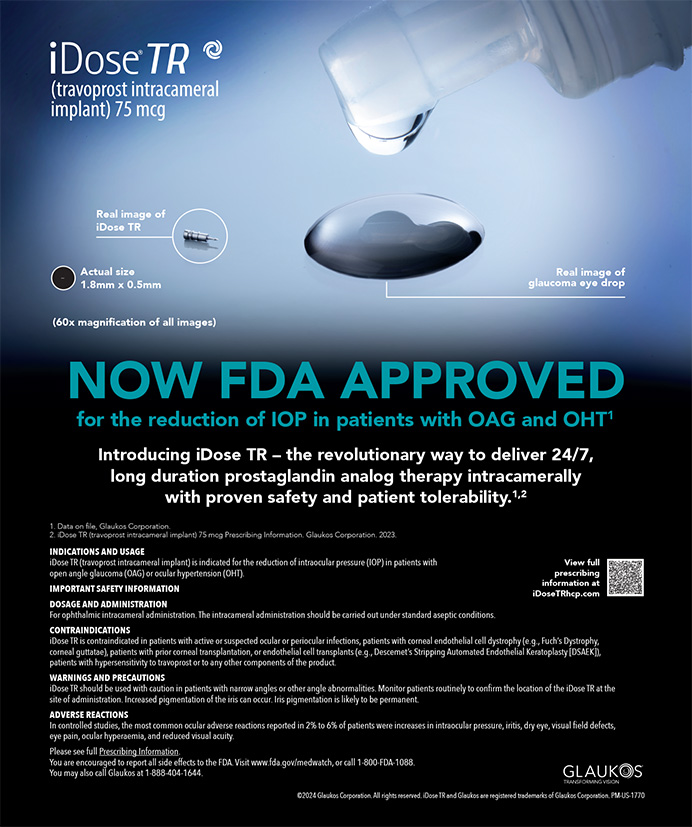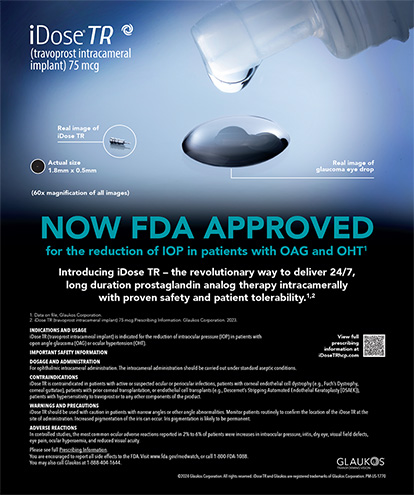During the past quarter of a century, there has been an unprecedented shift in cataract surgery from the hospital outpatient department to the ambulatory surgery center (ASC). According to an industry survey conducted by Market Scope, ASCs continue to be the location of choice for most US cataract surgeries. ASCs accounted for 75.1% of procedures during the second quarter of 2009, up slightly when compared to the second quarter of 2008, and approximately the same as during the first quarter of 2009.1 A majority of these facilities are owned and operated by ophthalmologists.
Will the ASC maintain its status as the facility of choice for ophthalmologists? In my opinion, several factors suggest it will. First and foremost, most patients prefer the ASC setting, both in terms of convenience and cost. Second, it is generally accepted by most ophthalmologists that the ASC is the more efficient venue at which to perform cataract surgery. Given the financial pressures in health care, ophthalmologists want and need to be in control of their schedule as well as their OR environment. ASCs provide ophthalmologists with a low-cost, high-quality surgical facility that can respond to the changing economic and political climate.
ASC PAYMENT METHODOLOGY
Changes in Medicare reimbursement, brought about by the introduction of the Ambulatory Payment Classification system in 2008, provided an expanded list of covered procedures and a more stable environment for ASC payment rates. This new method of reimbursing ASCs will be fully implemented by 2011.
In its final rule, the Centers for Medicare & Medicaid Services established a 4-year transition to the new payment rates using a blended methodology based on existing ASC facility fees and hospital outpatient department rates. By 2011, the agency anticipated that ASCs would be reimbursed at 65% of the hospital outpatient department fees.
On July 1, 2009, the Centers for Medicare & Medicaid Services released its proposed 2010 payment rates and policies. The year 2010 is the third of the 4-year phase-in of the new payment system and the first year in which Medicare is able to apply an update to the conversion factor. Under the proposed rule, the conversion factor would increase by 0.6% in 2010 using an inflation rate tied to the Consumer Price Index for Urban Consumers. It should be noted that the hospital outpatient department inflation rate is tied to a different adjuster, the Hospital Market Basket, which has exceeded the Consumer Price Index for Urban Consumers on average by 1.0% for the past 10 years.
The proposed rule calls for scaling of the relative weights for ASCs to maintain budgetary neutrality. Under the proposal, the rescaled rate would result in a decrease in payment, whereas hospital outpatient department rates are expected to increase in reimbursement. For example, ASC facility fees for cataract surgery (CPT 66984) would decrease by 1.4%, but cataract facility rates would increase by 1.7% at the hospital outpatient department rate.
BUSINESS OPPORTUNITIES
From a business perspective, the ASC provides ophthalmologists with an opportunity to maintain a passive income stream (compared with income earned from professional fees). Well-run ASCs should be able to operate with a reasonable profit margin for the facility's owners and thereby provide a source of income to supplement that earned from their professional practice. Several recommendations for enhancing the operating efficiency of an ASC follow.
GROW THE SURGICAL VOLUME OF THE CENTER'S PHYSICIANS
The owners of ASCs often overlook what should be an obvious consideration. Organic growth can be achieved in a number of different ways. One strategy worthy of consideration is to acquire the practices of retiring physicians. The marginal profit from the incremental increase in cataract surgery cases can significantly improve the overall operating efficiency of a surgery center.
DEVELOP A TARGETED MARKETING STRATEGY THAT FOCUSES ON BUILDING CATARACT VOLUME
The marketing efforts of many practices focus on elective procedural volume, but the return on investment from marketing cataract surgery can be much greater for ophthalmologists with an ownership interest in an ASC. Increasing referrals by cultivating relationships with community-based optometrists and primary care physicians is an effective strategy.
ENCOURAGE AND INVITE COMMUNITY SURGEONS TO CO-OWN YOUR FACILITY
After a reasonable trial period (eg, 6 months), consider offering a new surgeon an ownership interest in the facility. Ownership tends to focus the surgeon on operating at a high level of efficiency. Many existing surgeon owners are reluctant to dilute their ownership interest in the facility. If structured correctly, dilution should actually be beneficial. Although one's percentage ownership share decreases, the profit allocation should increase due to the improved operating efficiency achieved with the new case volume.
CONSIDER ADDING OTHER OPHTHALMIC SUBSPECIALTIES TO THE CENTER
The recent changes in facility reimbursement noted earlier make many procedures more economically feasible when performed in an ASC. Specifically, retina procedures may now make economic sense. Table 1 lists the retinal procedures that can be performed in the ASC along with estimated national payment rates, which need not be geographically adjusted for a specific locale.
ŒWhen considering the addition of retina procedures, the facility's owners should assess several key issues, including cost factors and procedural mix. Many retina cases can be more complicated and time consuming to perform, which will affect scheduling and staffing. In addition, capital expenditures for surgical instruments and equipment can be significant. Furthermore, the average cost per case for retina procedures is significantly higher than for traditional cataract surgery. Despite these potential risks, bringing retina cases to the ASC can have significant benefits, including increased comfort and satisfaction for patients, higher satisfaction for the surgeon, and a greater opportunity for profit than in the hospital setting.
ŒOculoplastic procedures can also prove a good addition to the ASC (Table 2). It is important to note that supply costs per case for oculoplastic cases tend to be lower than for a traditional cataract procedure.
CONCLUSION
It is a great time to be in the ASC business. Eye surgeons who have not taken advantage of this opportunity should carefully examine the feasibility of developing a new facility. In some states, however, this opportunity may be limited due to Certificate of Need laws.
Bruce Maller is the president of BSM Consulting in Incline Village, Nevada, and Scottsdale, Arizona. Mr. Maller may be reached at (755) 832-0690; bmaller@bmsconsulting.com.


